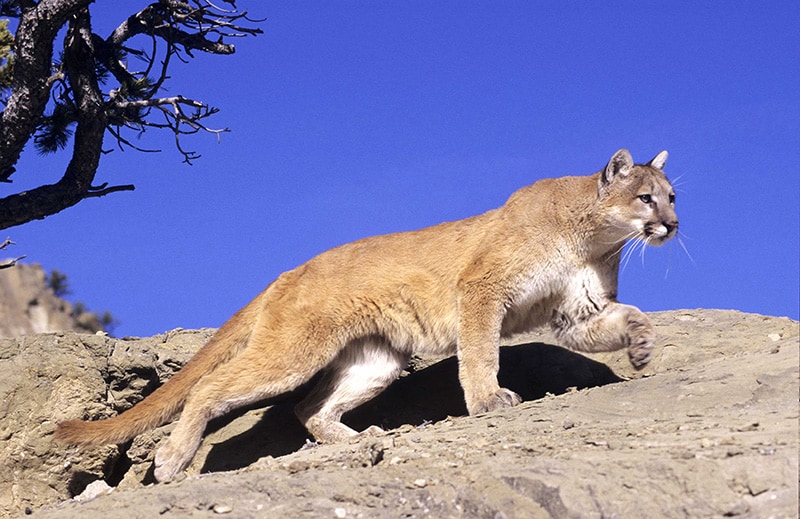While some cats appear to have a tight underbelly, you may see some cats with loose belly skin. This extra bit of fat and loose, fur-covered skin is known as a primordial flap, belly flap, or a primordial pouch.
The primordial pouch runs the length of the cat’s underbelly from the front legs to the rear legs. Primordial flaps are also known as primordial pouches or belly flaps.
These flaps are a natural part of a cat’s anatomy and are more prominent in some breeds and individual cats than others. Primordial flaps will also be more noticeable in cats that are overweight compared to thinner felines.
The primordial pouch on a cat is most notable when they are walking. The loose skin hangs down near the cat’s hind legs and, when large enough, swings back and forth with movement.

All Cats Have a Primordial Pouch
While you make think that being overweight is what causes this extra bit of loose skin, that’s actually not the case.
All cats have a primordial pouch. How prominent the primordial pouch is depends on the individual cat. Some cats have an almost undetectable pouch, while on other cats the primordial pouch is very noticeable.
The primordial pouch is not a sign that your cat is obese and is also something that develops as a result of spaying or neutering your cat. Even skinny cats can have a prominent primordial pouch.
Both male and females adult cats have primordial pouches.
What is the Primordial Pouch For?
Animal researchers have three hypotheses on what the purpose of the primordial pouch is for on a cat.
There are three main reasons why cats may have evolved to have a primordial pouch:
- Protection: The primordial flap may provide protection during fights or rough play. When cats engage in physical altercations, they often target the vulnerable abdominal area. The loose skin could help protect vital organs from injury by acting as a buffer.
- Flexibility and movement: The extra skin allows for greater flexibility and range of motion, especially when running or jumping. This can be advantageous for hunting and agility.
- Food storage: In the wild, cats may not eat regularly, and the primordial flap could serve as an expandable storage space for when they consume larger meals. As the cat’s stomach expands, the flap allows for more comfortable movement and digestion.
Primordial pouches provide protection
The first is that the extra fat and skin provide a layer of protection for the cat’s organs from attacks by predators and other cats.
Cats tend to target the vulnerable abdominal area when fighting or wrestling, and the presence of a primordial pouch can serve as a buffer, protecting internal organs from potential harm. The loose skin can absorb some of the impact from kicks, bites, or scratches, reducing the risk of serious injury.
Primordial pouches help cats with jumping and flexibility
The second hypothesis is that the pouch helps the cat to run faster and jump higher by giving the cat extra flexibility.
The extra skin allows the abdomen to stretch and move more freely, enabling cats to be agile and maneuver more efficiently. This enhanced agility allows cats to make rapid, sudden movements without being restricted by tight skin.
Primordial pouches can store fat on a cat
The last hypothesis is that the primordial pouch is an extra place on the cat’s body to store fat.
Cats in the wild eat only after a kill and there many be several days in between kills. Researchers believed the primordial pouch might serve as an expandable storage space that accommodates a cat’s expanding stomach after consuming a large meal.
Primordial pouches in wild cats
It’s not just the domestic cat that has a primordial pouch. Many wild cats have a primordial pouch.
Lions, tigers, and most wild cats have a primordial pouch.







